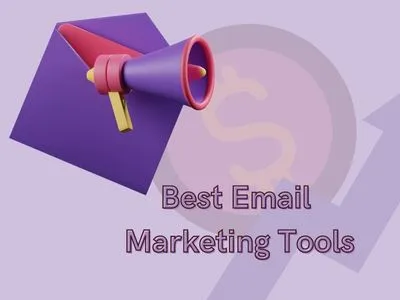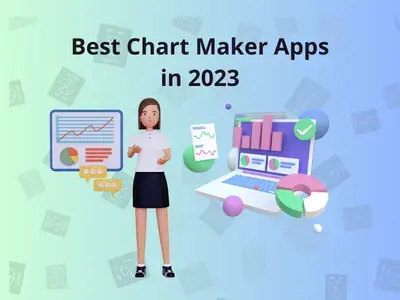Can automated accounting solutions really help you? Imagine this: It’s 6 p.m. on a Friday. You’re staring at your laptop, triple-checking spreadsheets, until the numbers start to blur, trying to reconcile your receipts for the week.
Most small businesses spend 8 to 12 hours per week on accounting tasks that could be automated. That’s where tools like financial reporting software for QuickBooks come in. Platforms like Cash Flow Frog can save you time and eliminate the guesswork from your financial decision-making. Using accounting software integration can help you transform accounting into a driver of business growth. Automation in small business finance has become a competitive necessity.
Manual Accounting vs Atomated Accounting Solutions
Spreadsheets, static PDF reports, and disjointed systems are nevertheless often used by enterprises despite the abundance of digital technologies available.
Your small business could face the following severe consequences: late fees, stricter auditors, and many financial problems, to name a few, if you do not refresh your accounting system. Let’s say, human-made sales data entry from different sales channels could lead to a mistake in the data, which in its turn can make it out to be real time-wasters, as well as shift attention from priority tasks like customer acquisition or product development. In addition, old-fashioned ways of doing the job increase the chances of errors occurring in tax filing, and ultimately, this can mean that a business is in for heavy penalties and audits.
What Integration Actually Means
Accounting software integration refers to the connection between your accounting platform and other tools you use in your business.
These integrations occur in every area of the business. CRM systems, such as Salesforce or HubSpot, sync contact and billing information for customer management. Order information is sent straight to your books by e-commerce platforms like Shopify and Amazon. PayPal and Stripe instantly log payments.
You don’t require coding to build up automated workflows since middleware solutions like Zapier and Make make the integrations accessible to non-technical users. According to a new article by The Telegraph for solopreneurs, automation is being used by single entrepreneurs in their businesses to handle financial tasks and free up time for strategic planning. To illustrate, a low-capital e-commerce venture can utilize Shopify and QuickBooks to automatically track every sale, thereby not only reducing manual work but also obtaining more precise financial data. This smooth transaction of information not only helps entrepreneurs quickly establish businesses, but also allows them to carry out activities more effectively without having to do the accounts.
Key Ways Integrations Save Time
(Source: Cash Flow Frog)
Integrations can save your business hundreds of hours a year.
Automated Data Entry
Your accounting system instantly receives data from the source regarding sales, wages, inventory, and expenses. Error risk is reduced and repetitive data entering is removed.
Real-Time Synchronization
Updated versions of customer data, payment records, and billing information are maintained across all platforms. When a customer changes their billing address, your accounting system and CRM are updated as well. You can make judgments faster with real-time synchronization, as you always have access to the most recent financial data.
Accelerated Bank Reconciliation
Most bank transactions can be automatically matched with the ledger entries that correspond to them using current accounting software. To streamline the reconciliation process, software such as Xero, for instance, can automatically classify transactions by comparing them to pre-established rules. This effectiveness frees up small business owners from tedious activities so they can concentrate on examining financial trends.
On-Demand Reporting
Accounting teams can produce highly significant reports, such as the statement of cash flows or information on investment profitability, in just a couple of minutes, thanks to the availability of actual, unfiltered data around the clock. These reports fetch strategic-planning-relevant figures and can be tailored to highlight specific indicators like changes in charges or time-related sales patterns. With converged systems guaranteeing the automatic modulation for reports and ensuring that a big part of the intervention is saved, they can be switched to the self-service mode for report scheduling.
Audit and Compliance Readiness
With timestamps, sources, and linked documents recorded for each transaction, maintaining clean audit trails is simple. The ease of access and the fact that everything is well-ordered make dealing with taxes very convenient and also are a great help for financial audits at any time. When systems have been integrated and the data process has been totally logged in an automatic way, there is also a reduced risk of infringement fines, and, therefore, a high confidence level of data protection (GDPR, HIPAA) can be maintained.
Choosing the Right Integration Tools for Atomated Accounting Solutions
(Source: Freepik)
Understanding your team’s workflows, your current software stack, and your long-term growth goals is essential for selecting the best accounting integration tools. The tools’ scalability should be taken into consideration. Will they help your company expand, or will you need to update your systems in a few years? To make sure the tools are easy to use and won’t interfere with regular business operations, assess your team’s learning curve as well.
Let’s look at how this works:
- Your accounting software comes with built-in connectors. QuickBooks Online allows for unconventional integrations with programs like Gusto, Shopify, and PayPal.
- Workato, Make, and Zapier are examples of third-party middleware that fill in the gaps between systems that don’t often integrate.
- Cash Flow Frog and other automated accounting solutions provide advanced features, including multi-entity consolidation, cash flow forecasting, and personalized dashboards.
Ask these questions before deciding which tool to use:
- Will non-technical users be able to use it?
- Does it align with data security and privacy standards?
- Is customer support available at short notice?
- Will it stay compatible with your other programs?
Think about the cost-benefit ratio as well. Does the time saved outweigh the setup or subscription fees? Seek out solutions that provide adjustable price structures to fit the budget and stage of expansion of your company. The most frequent and time-consuming tasks in your company should be automated first.
Getting Started with Integrations
The good news is you don’t have to change your entire system overnight.
Here’s a Practical Rollout Roadmap:
1. Audit Your Tools
List all the platforms your business uses. Note any manual procedures or persistent bottlenecks as you map the data flow between them.
2. Give High-Impact Use Cases Priority
Determine which areas require the greatest amount of administrative work and are also the most prone to errors.
3. Choose Your Tools Wisely
Look for solutions with strong reviews and a history of reliable performance.
4. Test Before You Launch
Use sandbox environments or test datasets to make sure that the integrations behave as expected. Look for data mismatches or automation gaps before you go live.
5. Train Your Team
Write simple, visual internal guides. Ensure that everyone who works with financial data is aware of the ways in which the systems work together.
6. Keep an eye on and improve
After going online, monitor the performance of important KPIs, including a quicker reconciliation or a drop in mistake rates.
Strategically Proactive
Accounting software integration will help you manage your business efficiently and with confidence.
Automated accounting solutions like Cash Flow Frog give your team the time to plan.
Whether you’re syncing Stripe payments, fast-tracking your monthly close, or consolidating reports across multiple entities, these systems can give you hundreds of extra business hours in a year.
We’d Love to Hear From You!
What’s the most frustrating part of your current accounting workflow?
Drop your thoughts in the comments and help fellow business leaders discover smarter ways to manage their financial operations.
In addition, discover the best automation tools, hand-picked by our experts!
- Top 10 Best Sites to Buy Quora Upvotes - September 3, 2025
- How New Technology Is Changing the Face of Customer Support - August 18, 2025
- How SaaS Tools Are Streamlining Contractor Operations - August 14, 2025


